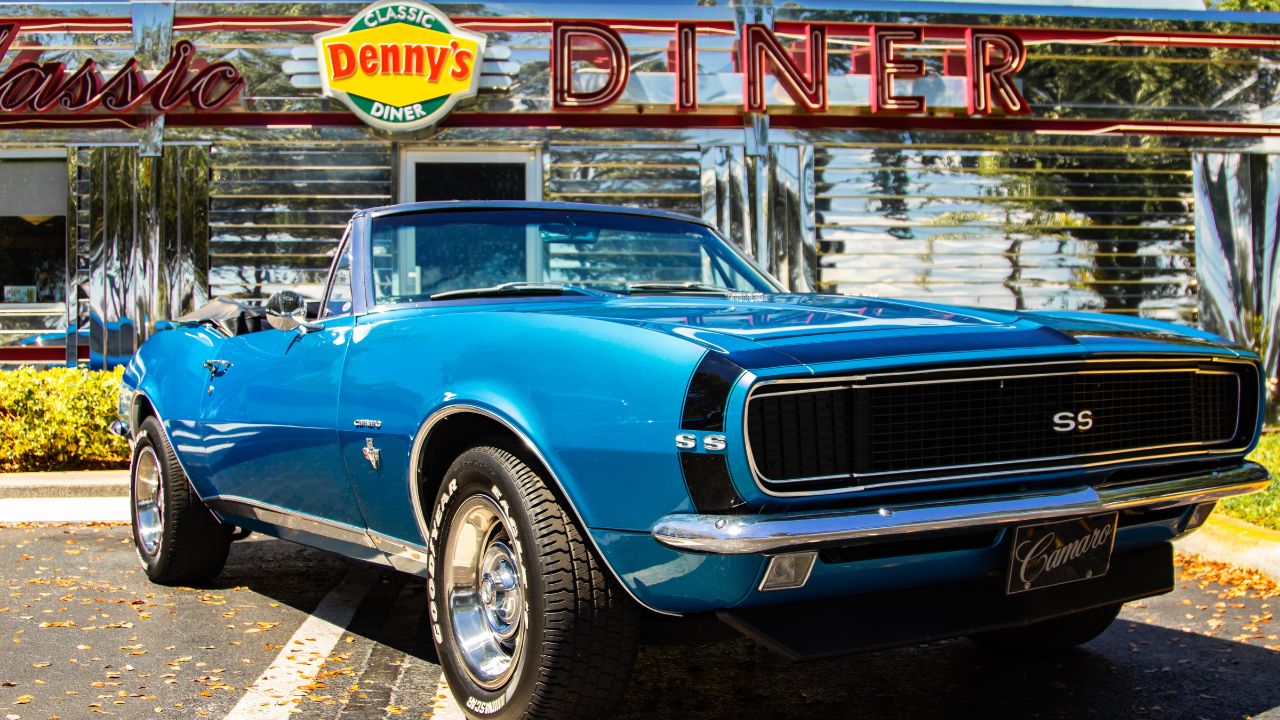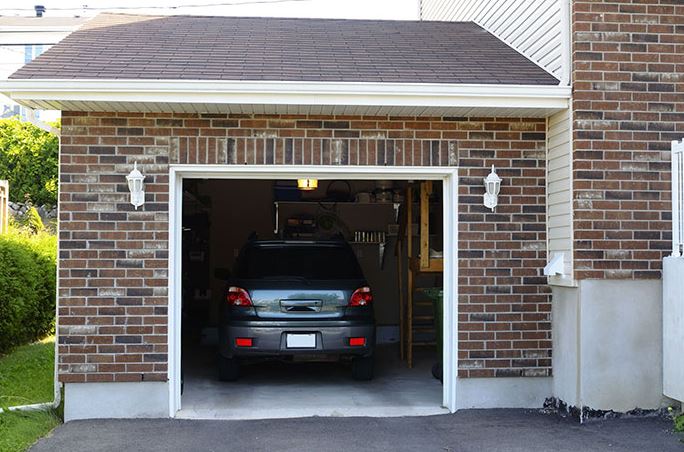
There is no doubt that the Ford Mustang has gone through more changes than Dolly Parton, Michael Jackson and others when it comes cars. These top 10 Mustangs don't necessarily appear in order. The list also doesn't include Grandes or EcoBoosts or any other new Mustang. These are the most outstanding Mustangs Ford has ever produced. These cars are the Ford Mustang's past and present.
The Mustang's first generation
The first-generation Ford Mustang is a popular car with a long history. The Mustang was affordable and agile, making it popular in the mid-1960s. It's not surprising that the car was such an instant hit. Gale Halderman created the first-gen Mustang unlike earlier Mustangs. The result is one the most iconic Mustang cars.
The first generation featured a fox-body. This body design was Ford's most beloved for a decade. In addition, it was the fastest car its class. Production began in August of 1978 with a new front suspension and various I-4 engines, and the pushrod 5.0 V8 was available in 1979. Fox Body engines were preferred among Mustang enthusiasts because they were lighter and more maneuverable than other versions.

The Shelby GT350R
The new Shelby GT350R model features a flat-plane V8 and a specially tuned suspension with revised spring rates and antiroll bars. This car also has a new flat-plane crankshaft and an all-new rear suspension. The powerful 5.2 liter engine will produce over 500 horsepower as well as 400 pound-feet. It will be made of carbon fiber with red pin stripes and will feature Ford Racing's MagneRide dampers.
Ford Performance engineers wanted to create a car with power, poise, and uncompromise communication at the limit. Ford Performance engineers wanted the GT350R as the ultimate race car. The flat-plane V8 is 526 horsepower, and offers one of most powerful torque bands in any production car engine. The GT350R has a Tremec sixspeed transmission with a mechanical limited-slip diff and is mated with a Tremec sixspeed differential.
The California Special
The Mustang California Special's interior is particularly stylish with heated front seats, red seams and red accents. The instrument panel is made of carbon hex aluminum and is stamped with GT/CS logos. The black trim is complemented with red contrast stitching. There is also a red interior accent panel. The car's body can be finished in many colors, including California Special red.
The California Special looks much the same as the original 1968 model. It features a black cloth roof, GT/CS badge, Honeycomb Grille, and optional side-air scoops. Carbonised Grey 19 inch wheels, a faux filleder cap, quad tailpipes and California Special decals along the roof are some other features. The interior features a leather upholstery and an eight-speaker stereo.

The 2019 Shelby Super Snake
The 2019 Shelby Super Snake is a hot rod that was originally introduced by Shelby American in 1962. This car boasts an eight hundred horsepower supercharged Ford 5.0L V8 engine and can launch from 0 to 60 mph in just three seconds. It has upgraded suspension, brakes, tires, and steering and is a joy to drive. You can choose from standard or widebody suspension. The Shelby Super Snake also has performance tires and optional widebody kits.
The Shelby Super Snake boasts an 825 horsepower V8 engine, which is mated a 10-speed transmission and a polished Whipple Supercharger. The Shelby Super Snake also includes a Shelby-tuned exhaust and a transmission cooler. All this power is sent to a transmission cooler, and to a limited-slip diff. Shelby Super Snake is the first Mustang that features this type of performance. It is definitely worth checking out.
FAQ
Is it difficult to become a mechanic apprentice
It's not easy, but you learn fast, and there are many opportunities for advancement.
You will need patience and perseverance. You should also be able to repair cars, trucks, and motorbikes.
Customers and family members can put a lot pressure on you. They want you to succeed. You should not feel pressured into making difficult decisions.
If you enjoy fixing cars, it could be a great career choice. It is a job you can get a decent salary for and help build your business.
Perhaps you prefer a different route. In this case, you could consider becoming a technician instead.
This could involve using your technical knowledge to support other employees. You could help technicians troubleshoot problems or teach them new techniques.
Another option is to become an advisor in service. This is where you can offer advice and assistance to customers who bring their vehicles to a garage.
Your choice is based on what you choose to do. There are plenty of options available, and you can choose which suits you best.
Is it worth being a mechanic.
The answer depends on what you are looking for in life. If money is your goal, then you can answer "yes". But if you are searching for meaning and purpose, then you should not answer this question.
If you don’t have any mechanical skills, it’s pointless to get into it. It will just waste your time. It's not going make you millionaire. It's unlikely that you will be famous. It's unlikely that it will change your life.
You'd have to spend years learning how things work. This would mean that you would have to pay someone else for your car's repair. It's the reason most people don't bother. They find something more worthwhile.
In conclusion, if money is your main goal, you should go ahead. But if you want to live a meaningful life, stay away from the mechanic's industry.
Is automotive mechanic a promising career?
The automotive industry is full of exciting opportunities for those who are dedicated to excellence. This field requires hard work and the willingness to learn from others.
Excellent communication skills are essential as you will spend most of the time speaking to customers or other employees. It's important to be flexible and willing to travel. This will make commutes difficult.
Consider taking classes at local universities or community colleges if your goal is to pursue a career in the automotive industry. Many schools offer programs designed specifically for students interested auto repair, sales, and customer services.
Mechanical engineering should be your first choice for a degree. You can earn a bachelor's in as little four years.
Many companies will hire students straight out of college. So it's wise to start looking for employment while you still have the chance to study part-time.
After you've finished your education, it's likely that you'll need to go through some training before you can be hired as an auto technician.
You will need to pass the Automotive Service Excellence certification exam. This test covers engine maintenance and brakes as well as suspension.
After passing the ASE test you can apply for a National Institute for Automotive Service Excellence (NIASE) license.
A license allows you to perform repairs on vehicles owned by private individuals. You will be compensated based on how many services you performed.
It's important to note that not all states require licensing. A license is required if you plan on working outside of your home state.
Some states won't issue licenses until you have completed a certain amount training. If this applies to you, then you may need to find another option.
Is it hard to get work as an auto mechanic?
It can be done. Many garages have vacancies that are advertised online. Many people apply because they think it will be fun. You can apply for several places to see if they are accepting student applications if you want to get your foot in their door. Alternatively, you could ask friends and family if they know anyone who works in the industry. They might be happy to recommend someone.
What kind of car mechanic jobs exists?
Three main areas of employment are available for car mechanics:
-
Automotive repair shops
-
Dealerships
-
Independent garages
Automotive repair shops
This is where most people consider becoming a mechanic. It's also the easiest way you can get started. You have two options: work in an existing shop or open your own.
If you decide to work at a shop, you'll need to apply to join a union. After being accepted into the union, the union will provide training.
Once the training is completed, you can start working.
You will need to register if your garage is going to be open. You'll need to meet certain standards after you register.
Once you register, you'll receive a license that allows you to operate your garage.
You can sell spare parts or do minor repairs with your license. It will not allow you to repair major engine problems.
Apart from selling spare parts, customers will also expect you to provide guidance and advice.
Dealership jobs
Many dealerships have mechanics who are experts in one particular area. For instance, they may only be qualified to fix brakes or change tires.
Some dealerships hire general mechanics to handle all aspects of car repair.
These positions often require applicants that they undergo special training before being allowed work. This allows employers to select the most qualified candidates for their roles.
Some dealerships will hire graduates straight from college. These graduates already have a basic understanding of mechanical engineering, so they are able to learn all about cars.
Independent garages
Independent garages aren't associated with any particular dealership. Instead, independent garages tend to concentrate on providing high-quality services.
Independent garages have the ability to afford higher wages, as they aren’t associated with any one company. This makes them generally more well-paid than jobs at dealerships.
However, independent garages may not be better places to work. Many business owners prefer to be in control of their businesses than to delegate it to employees.
So you may find yourself working long hours without having any say over what happens during the day.
Expect to earn lower salaries than if you were working in a dealership.
The good news? You can easily switch between different types of jobs. If you want to work at a dealership, then you simply need to ask your current employer if he would consider hiring you as a mechanic instead.
If you prefer to work in an independent garage, you might consider applying directly to its owner.
Finding a new job is not always easy. There are many factors that affect how much you make.
This could include the type of vehicle that you are working on and whether or not you charge an additional for labor.
Does it matter what college I go to?
You're wrong. In terms of getting into the auto industry, there is no distinction between colleges. But, there are better programs at some schools than others. Look elsewhere if you want something more niche.
Statistics
- According to the BLS, total auto technician employment is expected to exceed 705,000 by 2030. (uti.edu)
- The U.S. Bureau of Labor Statistics (BLS) reports that the job outlook for automotive service technicians and mechanics is expected to decline by 4% from 2019 to 2029. (indeed.com)
- 52% of Mechanics in the United States think their salaries are enough for the cost of living in their area. (indeed.com)
External Links
How To
How to properly diagnose your vehicle for repair
The symptoms of your vehicle are the first thing you need to look at in order to determine whether it is in dire need of repairs. These steps will help you diagnose your car properly.
-
Check engine lights. Inspect the dashboard light indicators. These include the engine lights, the oil pressure gauge and the battery light indicators. The RPM gauge and coolant temperature gauge should also be checked. You may have a problem with your vehicle if any of the indicators are flashing for more than a few days.
-
Examine the treads of the tires. Tires with worn treads could cause problems when handling or braking. It is also important to inspect the wheel treads. You should ensure that they are clean and smooth. This can be done by removing the wheels from the vehicle and taking them off. A flashlight can be used to check how worn the treads are.
-
Observe the brake fluid level. Keep track of the brake fluid level in your vehicle. This ensures that your brakes work properly. Low brake fluid levels can cause brake failure when you apply pressure.
-
Check the suspension system. Most vehicles have a suspension system that absorbs shocks and vibrations. It provides better control and allows smoother acceleration and deceleration. You might notice a wobbly feeling or uncontrollable shaking in your vehicle if it has a problem with its suspension. To determine whether your vehicle may have a suspension issue, you can try to put weight on the rear or front axle and watch the movement.
-
Examine your steering column. Steering columns are used to connect the steering wheel to the rest of the vehicle's components. The steering column can often be damaged by an accident. Replace it if your steering column feels loose or unsteady.
-
Observe the exhaust pipe. Exhaust pipes help move gases from the combustion chamber to the atmosphere. If your exhaust pipe leaks or cracks, it will allow harmful fumes into your cabin. It is also important to repair any bends in your tailpipe immediately.
-
Look under the hood. If you see anything unusual, take a look under the hood. Fluids could be leaking from your engine. A professional technician should be contacted if your engine compartment emits an unusual smell.
-
The air filter should be checked. The vehicle's outside environment may cause the air filter to collect dust and debris. Dirty air filters can cause your vehicle to run poorly. Replace your air filter regularly.
-
Check the fan belt. Your vehicle's fanbel is what connects the engine and the transmission. If the fan belt fails, the engine won't start. The process of replacing the belt is straightforward. All you need to replace the belt is a screwdriver with pliers.
-
Check the radiator hose and hoses. The radiator hose is used to carry water from the radiator to your engine. It can cause hot liquid to leak onto the engine if it is damaged or cracked. You only need a pair of needle-nose pliers and a small wire brush to repair the hose.
-
Be sure to inspect your windshield wipers. Windshield wipers work by using electricity to remove rain and snow. If they stop working, they could leave streaks on your window glass. The solution is to change the washer fluid.
-
The battery cables should be checked. The battery cables provide power for the electrical systems in your car. If you are replacing batteries, disconnect the negative cord first. Failure to do so can damage your alternator.
-
Make sure your headlights are working properly. Headlights are used to illuminate the road ahead. They can make it difficult to see if they stop working. Check the bulbs to see if they've burned out.
-
Always check your lights. The lights are there to warn other drivers if they approach you at night. One that doesn't work could cause you to be distracted, and possibly lead to an injury.
-
Inspect your brakes. Before you have a collision, brakes slow down your car. You may lose control of your vehicle and crash if the brakes don't function properly.
-
Change the oil. Keep your engine lubricated with oil. It protects metal parts and prevents them from wearing too quickly. Changing the oil every month is recommended.